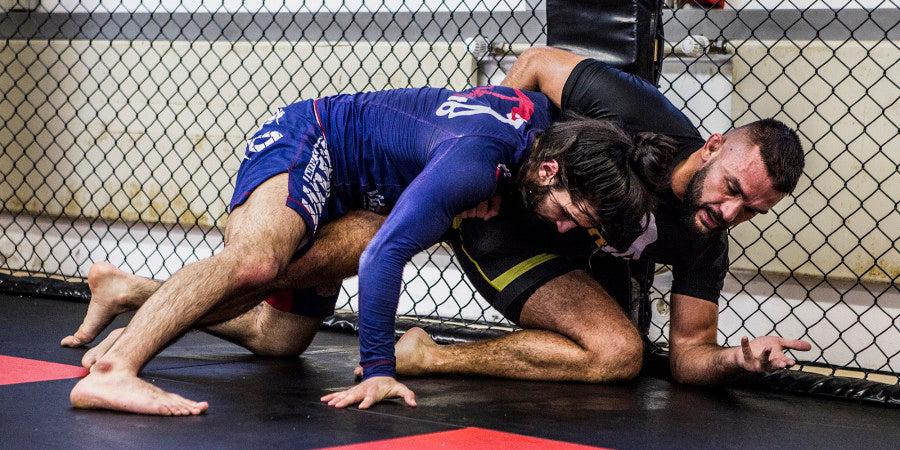The martial art/combat sport Jiu Jitsu (Eng. "The gentle/yielding art") and its related variations, which originated from the Japanese samurai, is a weaponless close combat form that is particularly evident in the Brazilian variant BJJ (short for Brazilian Jiu Jitsu). Characterized by the fact that physically inferior users can defeat physically stronger opponents with locks, chokes and throws. Today Jiu Jitsu is primarily popular because many active MMA (short for mixed martial arts) fighters use BJJ techniques in particular in order to have an advantage or at least no serious disadvantage in ground fighting in MMA.
However, if two opponents in the same weight class master the techniques equally well or if you fight against a technically better opponent, the physical factor of strength can make a not inconsiderable difference.
Of course, in addition to Jiu Jitsu, this also applies to sports such as wrestling, judo and submission wrestling.
The isometric maximum strength is often the limiting factor for the use and defense of lever and choke holds. This means a balance of power, where you apply the force until you break the opponent's resistance or the opponent tires and releases the grip. An advanced variation to train the isometric contraction is the double pause method in pull-ups. The advantage of this method is the isometric contraction in the middle of the eccentric and concentric contraction which leads to more control of both phases of the repetition and also leads to more control at the two turning points of the movement.
The double break is a 4222 Tempo on paper. However, the pauses - the 2 seconds in the second and fourth place of the tempo indication - are not made at the turning points as usual, but in the middle of the eccentric and concentric phase.
Here's how it works in practice: lowering the body during the pull-up/inclined bench press for 2 seconds to the middle of the eccentric movement, pausing there for 2 seconds. Then fully lower for 2 seconds and move up for 1 second to the middle of the concentric movement, pause again for 2 seconds, then pull the body fully up/push the barbell fully up for 1 second.
Here is a video of MMA Pro Mert Özyildirim doing a close neutral grip pull up with a double pause
https://www.youtube.com/watch?v=3_T8PjZ5NLA&feature=emb_logo
An example training program:
A1 Pull-ups, tight, neutral, 6 sets of 2-4 reps, 4222 tempo, 120 sec rest
A2 LH 30° bench press, 6 sets of 2-4 reps, 4222 tempo, 120 sec rest
B1 45° lateral raises, pronated, at belly button level, 4 sets of 6-8 reps, 2012 tempo, 100 sec rest
B2 dips, 4 sets of 6-8 reps, 4010 tempo, 100 sec rest
You can also find out more about the double break when bench pressing in the following article “ More bench press with the double break ”
Isometric contractions, and especially the conscious control of an isometric contraction, are rarely trained. To overcome plateaus and sticking points by learning to generate more power at certain points in a movement, or to gain more power advantages in Jiu Jitsu with this, the double pause is an excellent method for further progression in the strength training of an advanced athlete.
Good luck and more power with the double break!
Image: Planet Eater Mastermind Peter Sobotta (right) with his fighter Mert Özyildirim (left) sparring in the ground fight (Photo:Tim Leidecker)

